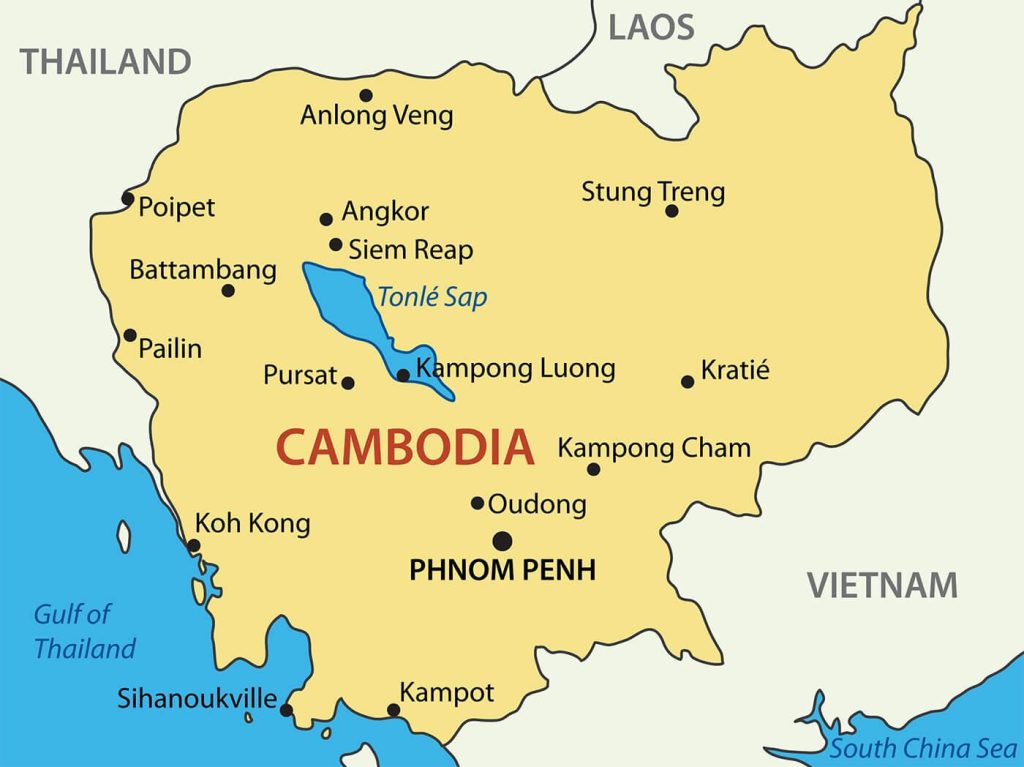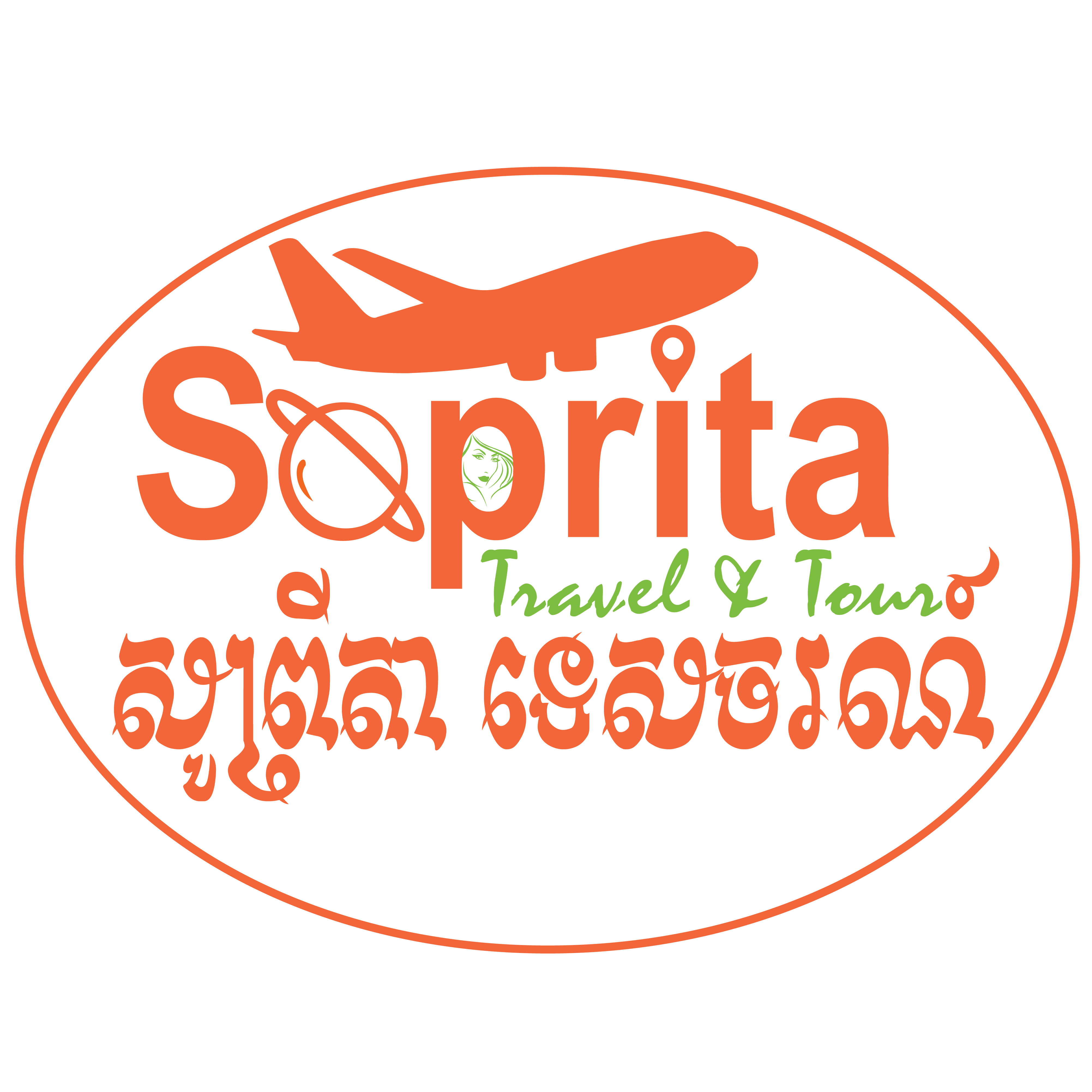
Geography
Location: Cambodia is located in Southeast Asia, bordered by Thailand to the west and northwest, Laos to the northeast, Vietnam to the east, and the Gulf of Thailand to the southwest.
Area: 181,035 square kilometers (69,898 square miles).
Capital: Phnom Penh.
Climate: Tropical monsoon climate with two distinct seasons:
Wet Season: May to October (hot and humid with heavy rainfall).
Dry Season: November to April (warm and dry).
Landscape: Dominated by low-lying plains, the Mekong River, the Tonlé Sap Lake (Southeast Asia’s largest freshwater lake), and mountain ranges like the Cardamom and Dâmrei (Elephant) Mountains.
History
Ancient Era: Cambodia was the heart of the Khmer Empire (9th–15th centuries), which built the iconic Angkor Wat and ruled much of Southeast Asia.
Colonial Period: Became a French protectorate in 1863 and gained independence in 1953.
Modern History:
The 1970s were marked by the devastating Khmer Rouge regime (1975–1979), led by Pol Pot, which caused the deaths of an estimated 1.7 million people.
Since the 1990s, Cambodia has been rebuilding and stabilizing under a constitutional monarchy.
Culture
Language: Khmer is the official language. English is widely spoken in tourist areas.
Religion: Theravada Buddhism is the dominant religion (practiced by about 95% of the population).
Traditions:
Cambodian culture is deeply influenced by Buddhism, with festivals like Pchum Ben (Ancestors’ Day) and Khmer New Year (April) being major celebrations.
Traditional dance, music, and art, such as Apsara dance, are integral to Cambodian heritage.
Cuisine: Cambodian food is flavorful and often includes rice, fish, and fresh herbs. Popular dishes include:
Amok: A coconut-based curry steamed in banana leaves.
Bai Sach Chrouk: Grilled pork and rice.
Nom Banh Chok: Rice noodles with fish-based green curry.
Economy
Currency: Cambodian Riel (KHR), but the US Dollar is widely used.
Main Industries:
Agriculture (rice, rubber, cassava).
Garment manufacturing.
Tourism (especially around Angkor Wat).
Challenges: Despite growth, Cambodia faces issues like poverty, income inequality, and reliance on foreign aid.
Tourism Highlights
Cambodia is a popular tourist destination known for its rich history, stunning temples, and natural beauty. Key attractions include:
Angkor Wat:
A UNESCO World Heritage Site and the largest religious monument in the world.
Located in Siem Reap, it is the most iconic symbol of Cambodia.
Phnom Penh:
The bustling capital city, home to the Royal Palace, Silver Pagoda, and the National Museum.
Historical sites like the Tuol Sleng Genocide Museum and Choeung Ek Killing Fields offer insights into Cambodia’s tragic past.
Siem Reap:
The gateway to Angkor Wat and a vibrant city with markets, restaurants, and cultural performances.
Tonlé Sap Lake:
A UNESCO Biosphere Reserve known for its floating villages and unique ecosystem.
Sihanoukville and Islands:
Coastal areas with beautiful beaches and islands like Koh Rong and Koh Rong Samloem, popular for relaxation and water activities.
Battambang:
A charming city known for its colonial architecture, bamboo train, and nearby temples.
Kampot and Kep:
Famous for pepper plantations, seafood, and the Bokor National Park.
Travel Tips
Best Time to Visit: November to February (cool and dry weather).
Transportation: Tuk-tuks, taxis, and buses are common. Domestic flights are available but limited.
Health and Safety: Drink bottled water, use mosquito repellent, and be cautious of petty theft in crowded areas.
Etiquette: Dress modestly when visiting temples, remove shoes before entering sacred spaces, and avoid touching people’s heads (considered sacred in Cambodian culture).
Cambodia is a fascinating country with a rich cultural heritage, stunning landscapes, and warm hospitality. Whether you’re exploring ancient temples, relaxing on pristine beaches, or immersing yourself in local traditions, Cambodia offers a memorable experience for travelers.


Leave a Reply